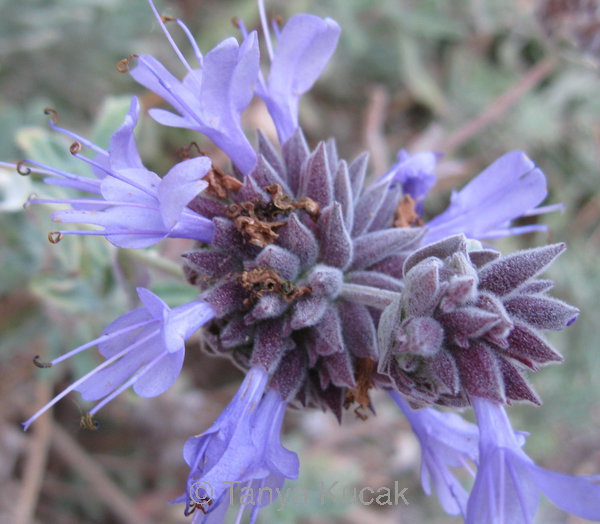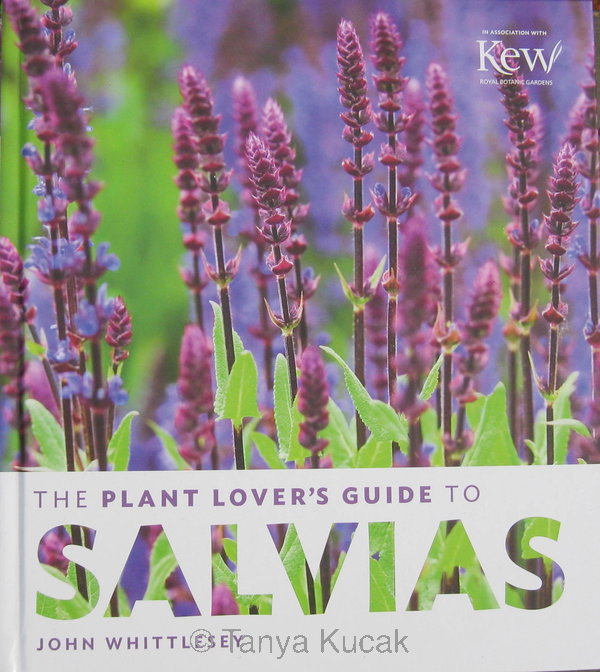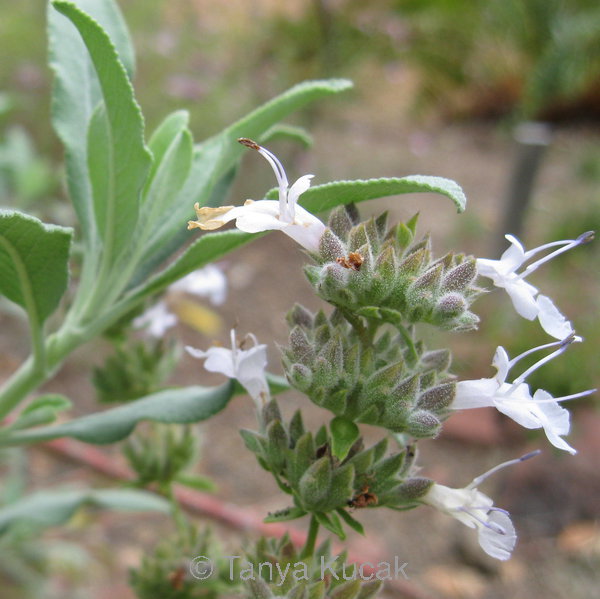California's “Cherce” Salvias
19 November 2014 PrevNext
The words of Ruth Gordon and Garson Kanin come to mind when I think of California's native sages: not many, “but what's there is cherce.” Of the 9,000 species of Salvia found worldwide, only 30 species are native to California, according to John Whittlesey, who talked about salvias at a native-plants symposium this fall in Los Altos Hills.
Whittlesey, the owner of Canyon Creek Nursery in Chico, likes salvias because they attract pollinators and other wildlife, offer fragrant leaves, and have wide variability. By far the largest number of them are perennial shrubs that grow in full sun and are drought tolerant. Most salvias “like space to open out, and don't like to be crowded.” Although only about a third of the native species flourish in garden settings, their ability to “hybridize readily” accounts for the plethora of named cultivars, each one with a different flower color, mature size, and other characteristics.
For instance, Whittlesey mentioned three cultivars of Cleveland sage:
- Arroyo Azul, with dark flowers and a more open structure
- Betsy Clebsch, with purple-blue and white flowers
- Winifred Gilman, 4 ft. tall and wide, with “electric blue” flowers
Cleveland sage is typically 4-5 ft. high and 4-6 ft. wide. In his book, The Plant Lover's Guide to Salvias (Timber Press, 2014), Whittlesey says its fragrance is “eloquently described by Joan Walters as a waterfall of pungent aromas.”
The following cultivars are “possible hybrids” of Cleveland sage with purple sage, all of which are “extremely drought-tolerant” in hot areas:
- Allen Chickering
- Aromas, 5 ft. tall and wide
- Pozo Blue, 3 ft. tall and wide
- Whirley Blue, with the largest flowers
This one is a hybrid of Cleveland sage with rose sage:
- Celestial Blue, with a burgundy-purple calyx surrounding the blue flowers
And this one is a hybrid of white sage and Cleveland sage:
- Vicki Romo, with foliage more like white sage and dark blue flowers
Albeit the most popular, Cleveland sage is just one of the species of native salvias. Garden-adapted varieties of other native sages are also available. In fact, most of the sun-loving perennial native sages grown in gardens are selections or cultivars derived from a handful of species:
White sage, an exceptionally drought-tolerant plant with “stunning silvery white foliage” Purple sage, a “wonderful landscape plant” that has “first-rate foliage year-round” Black sage, not his favorite for garden design, but “a very good pollinator plant” Sonoma sage, a spreading groundcover under 1 ft. high, “very susceptible to summer overwatering”
Other sages that are adaptable to gardens include a couple of interesting annual species: thistle sage and native chia.
For dry shade, one of the best plants is hummingbird sage. It will “migrate,” Whittlesey said, but is easy to control. He likes to plant it against a wall, especially cultivars such as Powerline Pink that can get flowering stems up to 4 ft. high.
Whittlesey's gorgeous book is a fine complement to Betsy Clebsch's more detailed New Book of Salvias (Timber Press, 2003, rev. 2008). The former is a visual treat and quick reference; the latter invites readers to sit down and read the engaging text. Both feature less than a dozen native salvias, with brief mentions of additional varieties.

The intoxicating aroma of Cleveland sage leaves entices gardeners to plant it next to a path, where they can regularly brush past it. Bees and other pollinators enjoy its purple/blue flowers, arranged in verticillasters along an interrupted spike.

This new book covers cultivation and landscape use of 150 of the best garden-worthy salvias of the estimated 9000 species worldwide, including about a dozen native varieties, with lovely full- and half-page photos of each one.

A hybrid of white sage and black sage, Starlight sage has white flowers. Its leaves are intermediate in size and color between the two species.
© 2014 Tanya Kucak
Next


